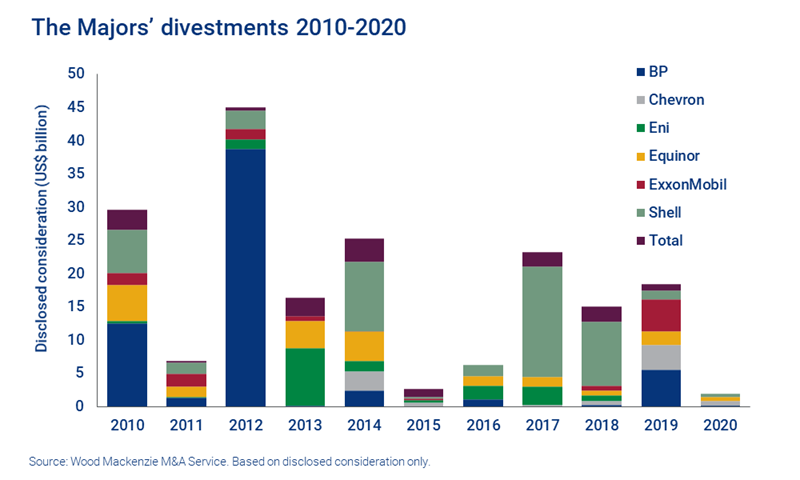1 minute read
Greig Aitken
Director, Corporate Research

Greig Aitken
Director, Corporate Research
With over 12 years of experience, Greig brings a holistic view of corporate activity to the upstream M&A research team.
View Greig Aitken's full profileUpstream mergers and acquisitions activity plummeted in 2020 due to the Covid-19 outbreak. Deal flow will almost certainly rebound in 2021 as the world recovers – but there are structural headwinds to be faced in the year ahead. So, how far will the rebound go and what does the ‘new normal’ look like?
This article is an introduction to Global upstream M&A: 4 things to look for in 2021. Fill in the form to read the report in full.
The challenges of 2020 were unique
Deal flow ground almost to a halt in the first half of 2020. The pandemic, coupled with the oil price collapse, saw upstream M&A fall to its lowest level in two decades. Records were set, including the fewest number of deals and the lowest aggregate deal value in a half year period.
We may not be free from the fallout of the crises of 2020 quite yet, but some of the physical, strategic and financial hurdles to deal-making have begun to dissipate in recent months. And they will continue to do so as vaccines support recovery. However, it’s still a buyers’ market and deal-making won’t be easy in 2021.
How does the market look in different regions? Read the full report for a snapshot from our regional reports.
There are some positive drivers – but the ‘new normal’ has its limits
With oil prices and sectoral confidence rising we might see some new buyers emerge. And we do expect continued corporate consolidation, almost regardless of oil price movements.
We think activity levels seen in 2019 are closer to a ‘new normal’. It was common to see more than 40 transactions per month in the first half of the 2010s, but that level of deal flow has rarely been matched since the 2014/2015 oil price crash. An insatiable appetite for growth in US unconventionals underpinned global deal flow through 2018. But when the tight oil land grab ended, deal activity slumped in 2019.
How many deals do we anticipate in 2021? Fill in the form to read this report in full.
Capital discipline will shape M&A activity
Improving oil prices usually boost deal flow and valuations. But we think capital discipline represents a new paradigm for oil and gas companies.
Across the industry, there’s a new focus on cash flow and returns. After two downturns in five years, and with the energy transition a looming presence, we think that discipline will largely hold through 2021, regardless of any continued recovery in spot markets.
There are two big implications for mergers and acquisitions:
- Reserves, production or acreage growth alone will not suffice as justification for deals
- M&A economics will be analysed against stringent cash and returns metrics
Demand for assets will be muted. And where there is competition for assets, buyers will be prudent.
What do we predict for implied deal breakeven prices in 2021? How will the quest for stronger balance sheets influence corporate consolidation? Where will consolidation activity be concentrated? Read the full report to find out more.
The Majors’ divestments will be an M&A bellwether in 2021
The Majors' divestment plans will be a key theme to watch in 2021, with billions of dollars' worth of assets in the crosshairs.
Most of the Majors’ balance sheets are now tighter than they’d like, and the Euro Majors in particular are also rapidly trying to build new energies businesses – and that calls for significant investment.
Which divestment programmes are the key ones to watch? And what would developments tell us about the overall state of the market?
Fill in the form at the top of this page to read this report in full.



